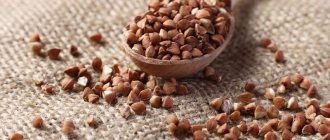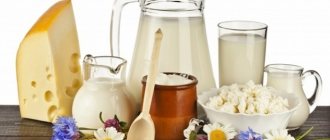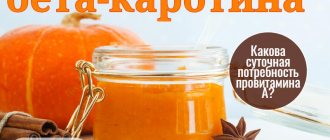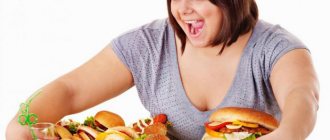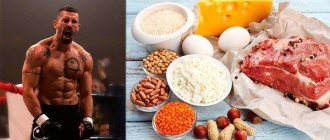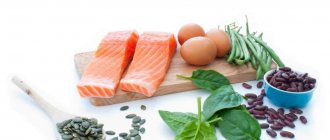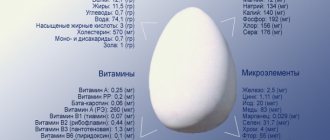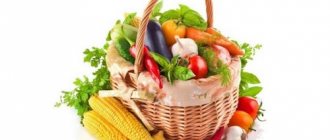How much protein is in cheese is of interest not only to those involved in bodybuilding, but also to the average person. It can be considered a unique product, in which the energy value is so high that it is sometimes superior to meat. Milk and cheese are similar in composition, but the latter contains much more useful substances.
For example, protein in milk is about 3.2%, and in cheese these figures are much higher, about 20%. If you are interested in calorie content, it is also an order of magnitude higher than in milk. Calorie content most often has different indicators, it all depends on the variety, and what was the fat content of the milk from which it was made.
For those who want to lose weight, it cannot be called an assistant and should be eaten with extreme caution.
Importance for the body
Proteins perform a variety of functions:
- Structural (fibrin, collagen) – protein is the basis for building tissues and organs.
- Energy (prolamine) - energy released during the breakdown of proteins.
- Signal (glycoproteins) - proteins of cell membranes recognize substances coming from the outside.
- Contractile (myosin) – provide motor activity.
- Reserve - stores nutrients.
- Transport (hemoglobin) - participate in gas exchange.
- Regulatory (hormonal) - regulate chemical and physiological processes.
- Catalytic (enzymes) – accelerate chemical processes.
This list of functions makes it clear that the role of proteins for the body is, of course, great.
Flaw
Today, protein deficiency is a pressing problem for many people. For some, it occurs when losing excess weight, for others - when becoming a vegetarian, and for others - due to diseases of the digestive and endocrine systems. A mild degree of protein deficiency often does not manifest itself clinically, so in the hectic days we rarely associate rapid fatigue with a decrease in the concentration of proteins in the blood.
The consequences of a lack of protein foods are quite sad: children’s growth and mental development slows down, adults suffer from liver failure, hormonal and reproductive disorders, and the immune system noticeably malfunctions.
If your health worsens, contact a specialist, undergo the necessary tests and receive adequate treatment. To replenish protein in your diet, add the following foods:
- lean beef;
- legumes, nuts;
- dairy products, eggs.
Opinions
The Internet is replete with rave reviews from women about the protein diet. Mostly positive. The girls lost extra pounds in a short period of time.
The opinions of nutritionists are not so one-sided. It has been noted that people quickly lose weight without feeling hungry. That's a plus. But also, nutritionists talk about the consequences that the achieved result is difficult to maintain. That is why they advise gradually leaving the diet.
Experts pay attention to possible problems of excess protein: heaviness in the stomach, constipation, excess stress on the kidneys.
Fast and slow proteins
Proteins are usually divided into fast and slow. This division is associated with different rates of their breakdown and absorption. Both types are equally important for the full functioning of the body.
Slow
From the name it is clear that the rate of absorption of these proteins is quite low. It takes about five to eight hours to completely process them. What are they needed for? They help the body cope with hunger for a long time, providing it with a large supply of energy. Slow-acting proteins are useful for those who want to lose weight.
These proteins work best if consumed in the evening. During a night's sleep, they are 100% completely processed. This approach will also help cope with the possible unbridled desire to eat something tasty and terribly high in calories.
Fast
Unlike slow proteins, fast proteins have an increased rate of digestion and absorption: only a few hours. Who needs them? Of course, athletes and people involved in hard physical work.
Nutritionists advise consuming them immediately before training and an hour after it.
How to combine them
The right combination of both types of proteins is necessary for good digestion. In this regard, the combined intake of egg whites and corn grits, beans, wheat flour and boiled potatoes works well. Dishes made from milk and rye, soy and millet are perfectly digestible. Slow and fast proteins are equally important for those who want to lose weight and those who want to gain weight. However, they will have a positive effect on people of both categories only if they comply with the daily norm, which we will talk about now.
Bodymaster.ru recommends Training Plans:
- Fat content.
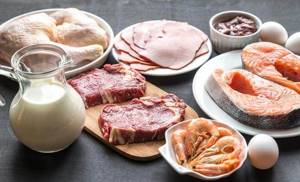
It is worth explaining here that if the choice fell on meat, then it should be dietary (chicken breast, turkey fillet, beef shoulder), if dairy products, then low-fat or with a low percentage of fat.
Animal proteins are found in meat, fish, eggs, dairy and fermented milk products.
Protein products of plant origin:
+ Low fat content.
- Slow absorption.
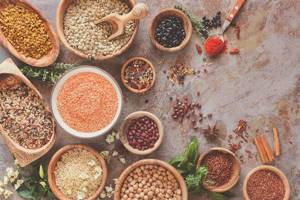
Proteins of plant origin are found in legumes, nuts, green vegetables, bran and seaweed.
The pros and cons of both types are obvious. It is important to consume them in a balanced manner.
Daily protein intake
The daily protein requirement for women is 58-87 grams, for men – 65-117 grams. But these are far from concrete numbers. After all, these indicators are influenced by several factors:
- body type;
- activity;
- nutrition;
- physical exercise.
Therefore, in each case the norm is calculated individually:
- Women - 58-87 grams. During pregnancy, the numbers increase one and a half times.
- Men - 65-117 grams. With good physical activity and an active lifestyle - up to 150 grams.
- Preschool children - 3 grams per 1 kilogram of body weight, school children - 2.5 grams per 1 kilogram of body weight.
To provide the body with the required daily protein intake, let's figure out which foods contain it in the greatest quantities.

What are the purposes of using protein foods?
Protein food, more than any other food, helps to maintain a slim figure. The amount of protein in the daily diet is especially important for those who want to lose weight or build powerful muscles.
The amount of amino acids in the diet is increased by following special diets - sports or aimed at reducing body weight.
For weight loss
In order not to exhaust yourself with hunger and lose a few kilograms, it is enough to increase the share of protein foods in your daily diet. It takes a long time to digest, eliminates the feeling of hunger, and promotes satiety. On protein diets, metabolism speeds up and the fat layer decreases, and there is no feeling of hunger - that’s why they are so popular.
The basis of the diet in protein diets is eggs, boiled chicken, fish. It is important that there are more of these products on the menu than fats and carbohydrates.
Amino acids for weight loss do not have to be taken from meat. This product is consumed 2-3 times a week. The rest of the time you need to eat:
- low-fat fish;
- nuts;
- seeds;
- beans;
- peas;
- low-fat dairy products;
- eggs without yolk.
The products listed on the list are quite high in calories, but it is impossible to lose weight without them. They speed up metabolism and help the body burn fat rather than destroy muscle. The digestive system spends a lot of energy processing protein products. This means that the body burns more calories, which allows a person who consumes enough protein to lose weight quickly.
Rules for eating protein foods for weight loss:
- Carbohydrates cannot be completely excluded from the diet - a small amount of them is necessary for the normal functioning of the body;
- dietary restrictions should not last more than 2 weeks;
- you need to eat every 3 hours;
- You need to eat protein foods with every meal;
- for a side dish you should use not potatoes and cereals, but vegetables with a minimum amount of starch - leafy ones, tomatoes, cucumbers;
- carbohydrate foods are allowed to be eaten only before 2 pm;
- all carbohydrates must be represented by complex polysaccharides (cereals); simple polysaccharides (sugar, bread) are prohibited.
A low-carbohydrate diet is contraindicated in cases of liver disease, kidney disease, and pregnancy.
For drying
Drying the body in bodybuilding is the process of giving muscles relief. At this time, they follow a special diet aimed at burning subcutaneous fat.
Drying is not ordinary weight loss, but a professional sports measure that requires adherence to strict rules.
Protein consumption during drying is maintained at 1.5 g per kilogram of body weight. Exceeding this dose is not recommended.
When drying, avoid dairy products as they contain a lot of fat. Even low-fat cottage cheese is considered too high in calories and fat. The required amount of proteins is obtained from seafood, sea fish, and lean veal.
List of Protein Rich Foods
Knowledge of protein-containing products will help not only to regularly replenish the daily protein intake, but also to correctly combine them with each other. So, the undisputed leaders in protein content are meat, eggs, dairy products and cereals.
Meat proteins
Meat is a storehouse of protein. It contains 20 amino acids, 8 of which the body cannot synthesize on its own. That's why they are called irreplaceable.
The largest amount of protein contains: veal, beef, horse meat, and venison. A lower protein content is found in turkey and chicken. Meat is well absorbed by the body. It is also important that it is digested slowly, so the feeling of fullness lasts longer than after eating dairy, vegetable or fish dishes.
Fish and seafood proteins
Fish is another source of easily digestible protein. The species that contain the largest amounts of it include salmon, herring, flounder, trout and tuna.
Table of protein content in fish
| Fish | Protein g/100 grams |
| Flounder | 15,7 |
| Salmon | 20,5 |
| Herring | 19,4 |
| Tuna | 24,5 |
| Trout | 19,2 |
Milk proteins
The name speaks for itself - this is a type of protein that makes up all dairy products. The largest amount is found in cottage cheese, cheese, milk, and kefir.
The situation with milk proteins is a little more complicated than with meat and fish proteins. To break them down, a special enzyme is needed - renin. And it is produced only in children, so only in them is it possible to completely break down casein (this is a milk protein). But what about being an adult? In this case, nature has endowed the human body with another enzyme - pepsin. Although even with its help, the breakdown of casein is not complete.
Cereals
In cereals, protein occupies from 7 to 14% of the total mass. Basically, it is represented here by gluten (gluten). Gluten is made up of a series of amino acids. As for the highest protein content, buckwheat is the leader here.
High Protein Seafood
Yellowfin tuna

Protein content: 25 g per 85 g product
Tuna contains the highest quality protein. In addition, it also contains huge amounts of vitamin B and the antioxidant selenium.
Remember: If possible, buy tuna caught on a spoon or in the net.
Halibut

Protein content: 23 g per 85 g product
Among white meat fish, halibut is the absolute leader in the amount of protein. There is only 2g of fat per 85g of product, making halibut an even more attractive food for champions.
Remember: Pacific halibut is generally considered more environmentally friendly than Atlantic halibut.
Octopus

Protein content: 25 g per 85 g product
An increasing number of fishermen are now offering this type of seafood. Octopus is ideal for those who want to build muscle mass, as it contains a fairly large amount of protein.
Remember: Fresh octopus is not as soft as frozen octopus.
Red salmon
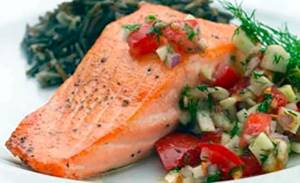
Protein content: 23 g per 85 g product
Wild salmon not only tastes better than its farmed counterpart, but also contains 25% more protein. In addition, salmon contains omega-3 fatty acids necessary for our body.
Remember: Try to buy salmon with the skin on, as it gives off a special flavor when the fish is cooked.
tilapia

Protein content: 21 g per 85 g product
Tilapia is usually easy to find in any store. This is a very affordable fish with a mild flavor and high protein content, which is essential for your muscles.
Remember: Try to buy American-made tilapia. It is safer than those imported from Asia.
Protein Digestibility
We talked about the benefits of protein. The topic of its digestibility was also touched upon a little when they said that the process of digesting the same casein is quite difficult in adults due to the lack of an enzyme that breaks it down. Therefore, it is better to replace milk with fermented milk products, and vegetable proteins with animal proteins. Take a look at the protein digestibility table in percentage terms:
| Product | Digestibility, % |
| Peas | 39 |
| Buckwheat | 38 |
| Milk products | 80 |
| Meat fish | 70-80 |
| Soybeans | 48 |
| Eggs | 88 |
In addition to the cooking method, the process of protein digestion is influenced by the state of the digestive system and diet. Numerous studies have proven that it is best to combine meat with vegetables, then the absorption process will be more complete. Also, protein digestion occurs best with frequent meals - 5-6 times a day. Experts do not recommend eating less often.
Which one is better to choose?
Nutritionists agree that there is no ideal protein. Despite this, polypeptides of animal origin must make up at least 50% of all proteins. Doctors came to exactly this conclusion because plant proteins are absorbed worse. Because of this, vegetables and greens do not dull the feeling of hunger well. This is the difference between plant and animal polypeptides.
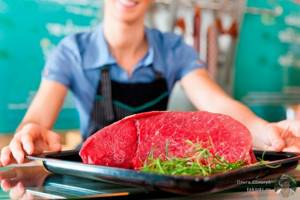
When consuming animal protein, preference should be given to dietary types of meat, lean fish, and fermented milk products. Plant foods must also be present in the diet. Cereals, vegetables, fruits contain fiber, vitamins, and salts. All these substances help products to be well absorbed.
Among plant polypeptides, grains and legumes are especially useful. Soy is the only plant protein that contains almost all the essential amino acids. I believe that it is not worth giving up some polypeptides in favor of others.
Sample daily menu
When choosing dishes for your daily diet, take into account your taste preferences: it is not at all necessary to strictly follow the proposed menu, you can swap dishes and experiment with ingredients. But at the same time, do not forget to comply with the daily protein intake and the total serving size.
Try to eat often, but in small portions. In the afternoon, experts recommend combining proteins only with vegetables that do not contain starch.
Here’s a short excursion into how to create a daily menu. We did not clearly describe the diet, but only provided different options: create a menu of dishes that you like.
Examples of various combinations:
- 1 meal (breakfast) - cottage cheese, yogurt, kefir with oatmeal cookies or chicken proteins. For drinks, you can use tea or coffee without sugar.
- Meal 2 – apple, grapefruit or orange.
- 3rd meal (lunch) - boiled turkey or chicken breast, stewed beef, vegetable soups or stewed vegetables.
- 4th meal - kefir, yogurt or cottage cheese.
- 5th meal (dinner) - boiled or stewed beef, fish or vegetable salads. Are you convinced that protein foods can be tasty?
As a snack, nutritionists allow the use of a protein shake, drink or bars, which are becoming increasingly popular throughout the world. There are special companies involved in their production. Products can be ordered at home via the Internet, having previously read reviews about a specific manufacturer.
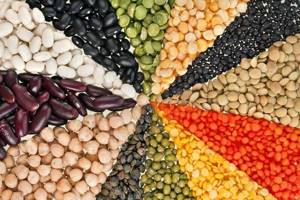
The Best High Protein Foods
- Dairy and eggs
- Meat
- Seafood
- Seeds and nuts Grains and legumes
- Fruits and vegetables
Here we mention some of the best protein-rich foods that you should include in your grocery list!
- Eggs
- Almond
- Chicken breast
- Cottage cheese
- Greek yogurt
- Oatmeal
- Milk
- Broccoli
- Tuna
High protein dairy products and eggs
Let's take a quick look at the best high protein dairy products.
- Peanut butter. 2 tablespoons of peanut butter contain 7.7 grams of protein and 188 calories (equivalent to 15% of your daily protein needs). Two spoons of peanut butter will give you 8 grams of protein per day. Traditional toast can be spiced up with this all-time favorite. You can also add peanut butter to protein shakes. Either way, it's a delicious vegetarian option for getting plenty of protein. Eating peanut butter has also been found to reduce the risk of developing type 2 diabetes. You can also add peanuts to your diet, as an ounce of them contains 7 grams of protein (along with 159 calories).
- Swiss cheese. 1 slice of Swiss cheese contains 7.5 grams of protein and 106 calories (equivalent to 15% of your daily protein needs). Swiss cheese also contains other nutrients that can benefit your bones, eyes, and immune system. In addition, it is low in potassium - and therefore people with kidney problems can enjoy this cheese. Another type of cheese, goat cheese, contains 7 grams of protein per ounce.
- Cottage cheese. 1 cup of cottage cheese contains 28 grams of protein and 163 calories (equivalent to 56% of your daily protein needs). Each half glass of cottage cheese contains 13 g of protein. This is an excellent, inexpensive and healthy food product. Apart from providing protein to muscles, cottage cheese contains calcium for good bones. You can combine it with vegetables or fruits to make a dish. Other types of cheese also have good amounts of protein. It is best taken in a low-fat version. Plus, cottage cheese is just as filling as eggs—and can be a good option for weight loss.
- Egg white. 1 large egg white contains 3.6 grams of protein and 16 calories (equivalent to 7% of your daily protein needs). Eggs are an excellent source of protein, especially egg whites. Egg whites are low in cholesterol and high in protein. Egg whites are also low in fat, making them an ideal food for a healthy and nutritious breakfast. One cup of egg whites contains 26 grams of protein. It will also provide you with energy and essential amino acids. Adults are recommended to eat one egg per day. And according to research, supplementing with egg white protein may increase muscle resistance strength—especially in women.
- Tofu. ¼ block of tofu contains 12.8 grams of protein and 117 calories (equivalent to 26% of your daily protein needs). Tofu is an excellent meat alternative and is used in a variety of dishes. Apart from protein, tofu is also rich in magnesium, iron and other essential nutrients. Like other soy products, tofu reduces heart disease by lowering bad cholesterol and promoting good cholesterol.
- Greek yogurt. 2/3 cup of Greek yogurt contains 11 grams of protein and 130 calories (equivalent to 22% of your daily protein needs). Besides protein, Greek yogurt also contains calcium and vitamin B 12. Speaking of calcium, your body cannot produce the mineral on its own. Therefore, you need to accept it outwardly. Calcium is very good for bones. And vitamin B 12 is necessary for the formation of red blood cells and brain function. Current research suggests that Greek yogurt may also have beneficial effects on gut bacteria.
- Soy milk. 1 cup of soy milk contains 8 grams of protein and 131 calories (equivalent to 16% of your daily protein needs). Soy milk is another great option for vegetarians to get a good dose of protein. Adding this super drink to your diet will provide you with the recommended daily amount of protein a person needs. Research also shows that drinking soy milk may reduce the risk of osteoporosis.
High protein meat
- Steak (Ground Beef) An ounce of ground beef contains 7.6 grams of protein and 76 calories (equivalent to 15% of your daily protein needs). Steak is especially rich in amino acids. These acids help prevent numerous diseases that lead to muscle wasting. Simply put, they protect and strengthen your muscles. Amino acids can also lower blood pressure and strengthen connective tissue. An 85g serving of ground beef contains about 23g of protein, which is 45% of the daily value. While 30 grams of roast beef contains 18 grams of the nutrient, 30 grams of beef jerky (lean beef meat, trimmed of fat and cut into strips) contains 13 grams of protein.
- Pork chop. 1 pork chop (top loin and boneless) contains 39 grams of protein and 286 calories (meets 77% of your daily protein needs). Pork chops are also an excellent source of zinc. This mineral is essential for numerous reactions in your body. And zinc deficiency can lead to night blindness and weakened immunity. Canadian bacon, another form of pork, contains 15 grams of protein for every 30 grams serving. And chorizo, a spicy Spanish pork sausage, contains 21 grams of protein for every 30 grams serving. While pepperoni contains 18 grams of nutrients for the same amount of serving, slow roasted pork loin contains 28 grams of protein for every 30 gram serving.
- Turkey breast. 1 slice of turkey breast contains 4 grams of protein and 22 calories (equals 7% of your daily protein needs). In addition to being one of the best high-protein foods, turkey breast can also keep you feeling full for a long time. Turkey breast contains less fat and calories than most other cuts of meat. Additionally, it contains selenium, which may help prevent a range of cancers.
- Chicken breast. ½ chicken breast contains 28 grams of protein and 142 calories (meets 53% of your daily protein needs). Poultry consumption has many benefits for people of all age groups and conditions. This is especially beneficial for people who have higher protein and calorie needs. When using chicken breasts, instead of throwing away the bones, you can use them to make bone broth. This is another protein-rich food (a quarter cup contains 20 grams of this nutrient).
High Protein Seafood
Below is a list of high protein foods that fall under the seafood category.
- Halibut. ½ halibut fillet (Atlantic and Pacific) contains 42 grams of protein and 224 calories (meets 85% of your daily protein needs). Fatty fish, such as halibut, are rich in omega-3 fatty acids, which are known to reduce the risk of heart disease and lower cholesterol. Halibut is also low in saturated fat, the unhealthy type of fat.
- Sardines. 1 small sardine contains 3 grams of protein and 25 calories (equivalent to 6% of your daily protein needs). Omega-3 fatty acids in sardines reduce the risk of developing inflammatory and cardiovascular diseases. Other important nutrients that sardines are rich in are selenium (to prevent oxidative damage to the body) and vitamin B 12 (for nerve function and brain health). Sardines also have vitamin D, which facilitates bone health.
- Pacific cod. 1 fillet of Pacific cod contains 21 grams of protein and 95 calories (equivalent to 42% of your daily protein needs). The good thing about cod, besides being an excellent source of protein, is that it contains much less fat. And even more heart-healthy mono and polyunsaturated fats. Vitamins D and B 12 regulate bone health and improve nerve function, respectively.
- Anchovies. 30 grams of anchovies (European) contains 5.7 grams of protein and 37 calories (equivalent to 11% of your daily protein needs). In addition to protein, anchovies are also rich in magnesium, calcium and phosphorus, all of which are essential for bone development and maintenance. Calcium also supports the functioning of the cardiovascular system. It stimulates the blood vessels in the heart, while magnesium causes them to relax. They work in unison to support heart health and blood pressure.
- Octopus. 30 grams of octopus contains 4.2 grams of protein and 23 calories (equivalent to 8% of your daily protein needs). Like all seafood, octopus is lean and low in calories. One of the disadvantages is cholesterol - it is high in it. So, practice moderation. Otherwise, it is naturally rich in iron, a mineral essential for transporting oxygen to various parts of the body. Iron also plays an important role in cell growth. And the selenium in octopus acts as an antioxidant and prevents free radical damage.
- Yellowfin tuna. 30 grams of boneless tuna contains 6.6 grams of protein and 31 calories (equivalent to 13% of your daily protein needs). Tuna is also rich in B vitamins, which promote nerve function and blood circulation. This food is a source of protein that is low in calories and cholesterol. One serving of light tuna (154 grams) contains about 39 grams of protein. It is 79% of the daily value.
- Salmon. 30 grams of salmon contains 6.3 grams of protein and 39 calories (equivalent to 13% of your daily protein needs). Salmon is a source of nutrition. This is very beneficial to overall health. Omega-3s reduce inflammation and help treat joint pain. They also help neurological recovery and heart health. Salmon can also promote healthy skin.
- Tilapia. 30 grams of tilapia contains 4.2 grams of protein and 27 calories (equivalent to 8% of your daily protein needs). Besides being one of the protein-rich foods, tilapia also contains omega-3 fatty acids (the benefits of which we've already seen). It is also a good source of calcium, which, in addition to promoting strong teeth and bones, also works with potassium to improve nervous system function.
High Protein Seeds and Nuts
Check out the best sources of protein in the seeds and nuts category here that you'll want to add to your diet.
- Pistachios. 1 cup of pistachios contains 25 grams of protein and 685 calories (meets 51% of your daily protein needs). Pistachios are a good source of fiber, which aids digestion. Fiber can also promote satiety—therefore preventing overeating and promoting weight loss. Pistachios are also rich in folic acid, which is beneficial for pregnant women. They are packed with nutrients and contain antioxidant compounds that are great for health.
- Almond. 10 almonds contain 5.9 grams of protein and 161 calories (meets 12% of your daily protein needs). Almonds are known to reduce the risk of cancer and heart disease. They also help lower cholesterol levels. Nuts are also known to reduce the risk of diabetes.
- Walnuts. 1 cup of chopped walnuts contains 18 grams of protein and 765 calories (meets 36% of your daily protein needs). Eating walnuts regularly may help prevent the formation of gallstones. They are also a good source of copper, which improves bone mineral density and prevents osteoporosis. And walnuts also contain magnesium, which may help fight epilepsy. Walnuts also contain polyphenolic compounds that reduce the inflammatory burden on brain cells and enhance interneuron signaling.
- Pumpkin seeds. 1 cup of seeds contains 12 grams of protein and 285 calories (equivalent to 24% of your daily protein needs). The seeds are also rich in zinc, which boosts immunity. This same zinc even improves prostate health and prevents prostate cancer in men. Pumpkin seeds can also improve insulin regulation, thereby preventing diabetes.
- Cashew nuts. 30 grams of cashews contain 5.1 grams of protein and 155 calories (equivalent to 10% of your daily protein needs). The copper and iron in cashew nuts promote the formation of red blood cells. This, in turn, keeps the entire system running optimally. Cashews are also exceptionally good for your eyes. They are an excellent source of magnesium, a mineral that is essential for body processes.
High Protein Fruits and Vegetables
- Broccoli. 1 stalk of broccoli contains 4.3 grams of protein and 51 calories (equivalent to 9% of your daily protein needs). One of the best high-protein vegetables, broccoli is touted as one of the best cancer-fighting foods. Considering that it is rich in phytochemicals, it works as an excellent anti-tumor food. Additionally, the vegetable is an excellent source of fiber, especially soluble fiber (which helps regulate blood glucose and cholesterol levels and prevent diabetes and heart disease). Broccoli is also an excellent source of vitamin K, which improves bone health (as vitamin K improves calcium absorption ).
- Asparagus. 1 cup of asparagus contains 3 grams of protein and 27 calories (equivalent to 6% of your daily protein needs). Another good thing about asparagus is that it can prevent urinary tract infections. The amino acid asparagine contained in this vegetable product makes it a natural diuretic. It also contains vitamin E, which strengthens and improves skin health.
- Sweet corn. 1 large ear of corn contains 4.6 grams of protein and 123 calories (equivalent to 9% of your daily protein needs). On the plus side, sweet corn is fairly low in fat. And that's good news. The vegetable is also rich in potassium and vitamin A. Potassium is usually lost through sweat, which means regular replenishment of the mineral is important - as it promotes heart health and strong bones. Vitamin A acts as an antioxidant.
- Cauliflower. 1 large head of cauliflower contains 16.6 grams of protein and 210 calories (equivalent to 33% of your daily protein needs). Another important nutrient in cauliflower is choline. This nutrient improves memory and learning, improves sleep, and helps with muscle movement. Choline also helps in the transmission of nerve impulses and helps in the absorption of fat.
- Apricots. 1 apricot contains 0.5 grams of protein and 17 calories (equivalent to 1% of your daily protein requirement). In addition to potassium and fiber, apricots are also rich in non-heme iron (a type of iron found in plants). A diet rich in iron can prevent anemia. Additionally, non-heme iron is not as easily absorbed as heme iron. This is why you should take apricots along with a source of vitamin C (Vitamin C improves iron absorption).
- Mandarin. 1 large tangerine contains 1 gram of protein and 64 calories (equivalent to 2% of your daily protein needs). Tangerines are rich in flavonoid compounds that have antitumor properties. They neutralize free radicals that cause disease and may prevent heart disease. Flavonoids may also improve blood flow in the coronary arteries.
- Coconut. 1 medium coconut (meat) contains 13.2 grams of protein and 1,405 calories (equivalent to 26% of your daily protein needs). Both coconut water and coconut meat are highly nutritious. Coconut water has a number of health benefits and is highly recommended, especially during the summer season. Raw coconut is also rich in medium chain triglycerides, which can help you lose weight. One serving of coconut meat contains several minerals, and including it in your diet invariably increases its nutritional value. And several substances in coconut can help boost your immunity.
- Banana. 1 large banana contains 1.5 grams of protein and 121 calories (equivalent to 3% of your daily protein needs). Bananas are also a good source of potassium. They relax the walls of blood vessels and lower blood pressure. Fruit can also be a good food to take during diarrhea - as electrolytes such as potassium are lost during diarrhea, and a banana helps replenish the mineral. Bananas, rich in fiber, can prevent heart disease and diabetes. They are also rich in amino acids and can be used as face masks to treat dry skin.
How to compensate for the lack of protein for vegetarians
Vegetarianism is a food system whose benefits are still controversial to this day. After all, in any case, a healthy diet should be balanced in all nutrients, which means including protein. But what if meat, the main source of protein, is something someone “shouldn’t” eat? Experts assure that some herbal products will be an excellent alternative:
- soy;
- legumes;
- nuts.
Also among the plant sources of high protein is corn. It is rich in fatty oils, mineral salts and selenium.
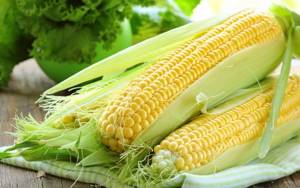
Protein foods for pregnant women
The diet of the expectant mother should be balanced and include vitamins and minerals. To ensure a healthy pregnancy and proper development of the fetus, protein must be present in the daily menu of pregnant women:
- Quail and chicken eggs. You should avoid eating raw eggs.
- Dairy products - milk, kefir, natural yogurt, cottage cheese, low-fat sour cream.
- Grain products, cereals, wholemeal bread.
- Sea fish - salmon, sardines, anchovy, hake, scallops. Canned food should be avoided.
- Lean chicken or turkey meat, fish, beef.
The effect of protein on the body of a pregnant woman:
- ensures normal fetal development;
- plays a transport role in the transfer of nutrients, calcium and iron;
- strengthens the immune system (protein products are the main antibodies against viruses and bacteria);
- ensure optimal functioning of the coagulation and anticoagulation systems,
- prepares the mother's body for breastfeeding,
- responsible for lactation processes,
- strengthens the mammary glands, uterus and placenta, preparing the body for childbirth,
- contribute to the regulation of hematopoietic function, protects the mother’s body from anemia.
- has a beneficial effect on the intestinal microflora,
- improves blood supply to the fetus.
If the expectant mother eats for two, this contributes to the gain of fat mass, which negatively affects childbirth and can even affect the health of the child.

Expert opinion
Don't assume that getting back and staying slim is just a matter of eating the right amounts of different proteins every day. This is certainly important, but it is only part of proper nutrition. And not the most significant one. The formation of healthy eating behavior includes returning to normal consumption of not only proteins, but also carbohydrates, fats, vitamins, microelements, clean water, and other liquids, and calories. Complying with these standards is not easy: it will require willpower, discipline, and perseverance in achieving goals. However, modern progressive techniques for losing and maintaining weight allow you to stay slim by making proper nutrition a regular habit, thus minimizing any effort and restrictions.
